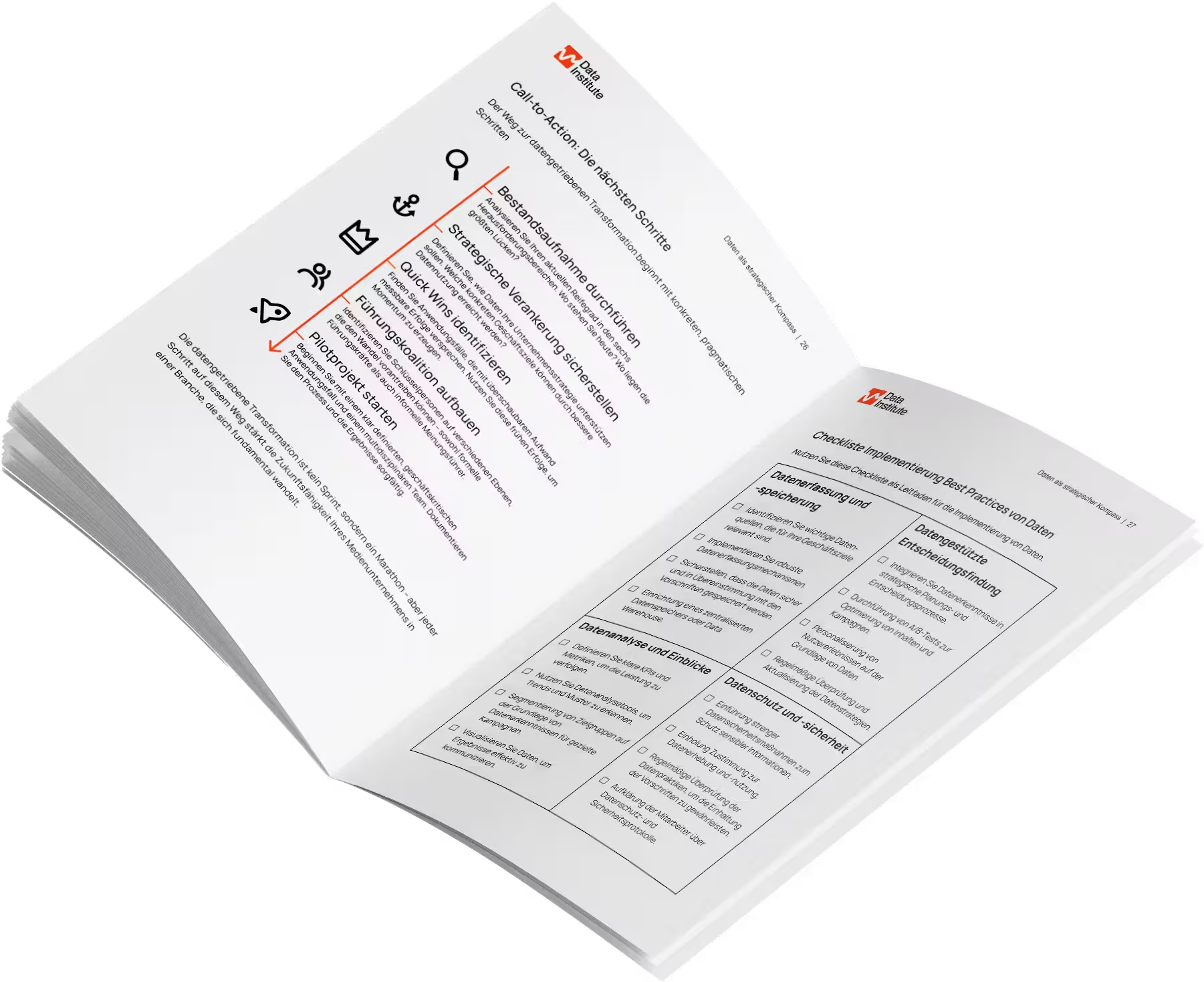Leadership + Participation Establishing digital mindset


The roadmap for data-driven transformation
The ePaper shows you strategies, success stories and a checklist for a direct start into the digital future.

- Das ist eine H2
- Das ist eine H3
After the basics of the digital mindset (part 1) and the strategies to overcome cultural resistance (part 2) we focus today on the key players on this transformation.
Leadership as a catalyst: setting an example instead of prescribing
“The fish stinks from the head down” — this saying also applies to digital transformation. From my experience as a managing partner, I know: Decisions made top-down and communicated without genuine dialogue result in low acceptance.
In my management practice, I have learned to break away from micromanagement and look at strategic whole to fix. For example, if I didn't simply specify headcount definitions, but made data transparent and argued, more well-founded decisions were made.
My goal was always to have a open innovation culture in which it is not fear of mistakes that dominate, but the urge for better insights.
What exemplary leadership means in practice:
- Consistent data-based decision making: In principle, do not make strategic decisions without data-based principles — even if it means deviating from “gut feeling.”
- Transparent communication: Not only communicate the “why”, but also make it visible through concrete action. Regular “data updates” create trust.
- Active empowerment: Provide resources for training, remove barriers, and be present on data initiatives. Leadership means to act as enablers, not as inspector.
Employees as co-designers: From stakeholders to participants
The most effective transformations happen when employees become active co-creators. In my teams, I always have on Bottom-up design set. The introduction of “Data Champions” — Employees who acted as bridge builders between departments and data teams.
Proven participation strategies:
- Establish data stewards: Clear responsibilities for data quality not only create order, but also encourage the assumption of responsibility for “their” data.
- Cross-functional teams: Break down silos with teams that connect different departments and work together on data-driven solutions.
- Regular feedback loops: Involve employees in design phases at an early stage. Anyone who is part of the solution becomes an advocate.
Motivation beyond training: The three pillars
True motivation comes when employees experience three fundamental needs in their work:
Autonomy: Micromanagement kills innovation. Employees need the freedom and trust to act independently.
Mastery: The need for continuous development through mentoring, peer learning, or specific data literacy programs. “Continuous learning” must become part of the company's DNA.
Purpose: Employees must understand the “why” and see how their work with data contributes to overall success. Benefit-oriented communication sparks tremendous energy.
The learning culture as a foundation
A digital culture is a learning culture. The “Never Settle” principle — constant change and questioning the status quo — must be anchored in the company's DNA. Specific measures:
- “Data Literacy Workshops“: Practical, target group-specific training with real company data
- Encourage experimentation: Create a safe space where mistakes are seen as valuable learning opportunities
- Knowledge sharing: Regular sessions and mentoring programs for knowledge transfer
My conclusion: leadership and participation as a unit are the team for success
The most successful digital transformations occur when leadership from above and participation from below get together. It is like an orchestra: Without the conductor, there is no direction; without the musicians, it remains silent.
Digital transformation is not a sprint, but a marathon. And as with any marathon, it is not only speed that determines success, but above all perseverance, the right pace and a common goal of all parties involved.
As a manager, I know that success depends on how we empower, motivate and involve our employees in change. It's a journey that requires courage and persistence, but the reward is an agile, innovative, and truly data-driven organization.
What experiences have you had with managers as role models in digital transformation? Have you already implemented successful participation programs?
Write to me — I am happy to share further insights from my practice. Or do it right away an appointment with me.
As co-founder of The Data Institute I incorporate this experience from various industries and leadership roles directly into our consulting approaches. Because in the end, it is not the best technology that determines success — but the people who use it.
Picture: Galka_nz https://unsplash.com/de/@galka_nz on Unsplash

Digital transformation is not a sprint, but a marathon
Subscribe to our newsletter and follow our transformation projects.
Digital transformation is not a sprint, but a marathon
Subscribe to our newsletter and follow our transformation projects.

Digital transformation is not a sprint, but a marathon
Subscribe to our newsletter and follow our transformation projects.

Related case studies
There are suitable case studies on this topic






